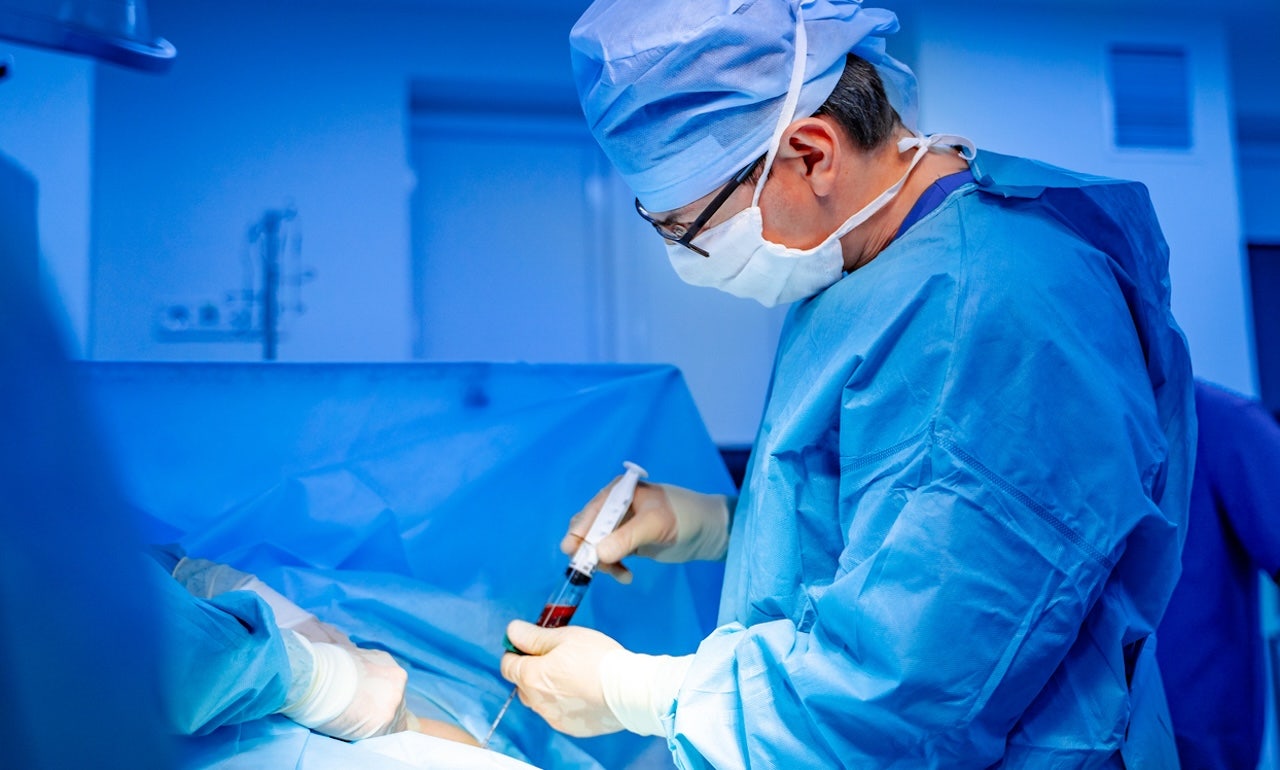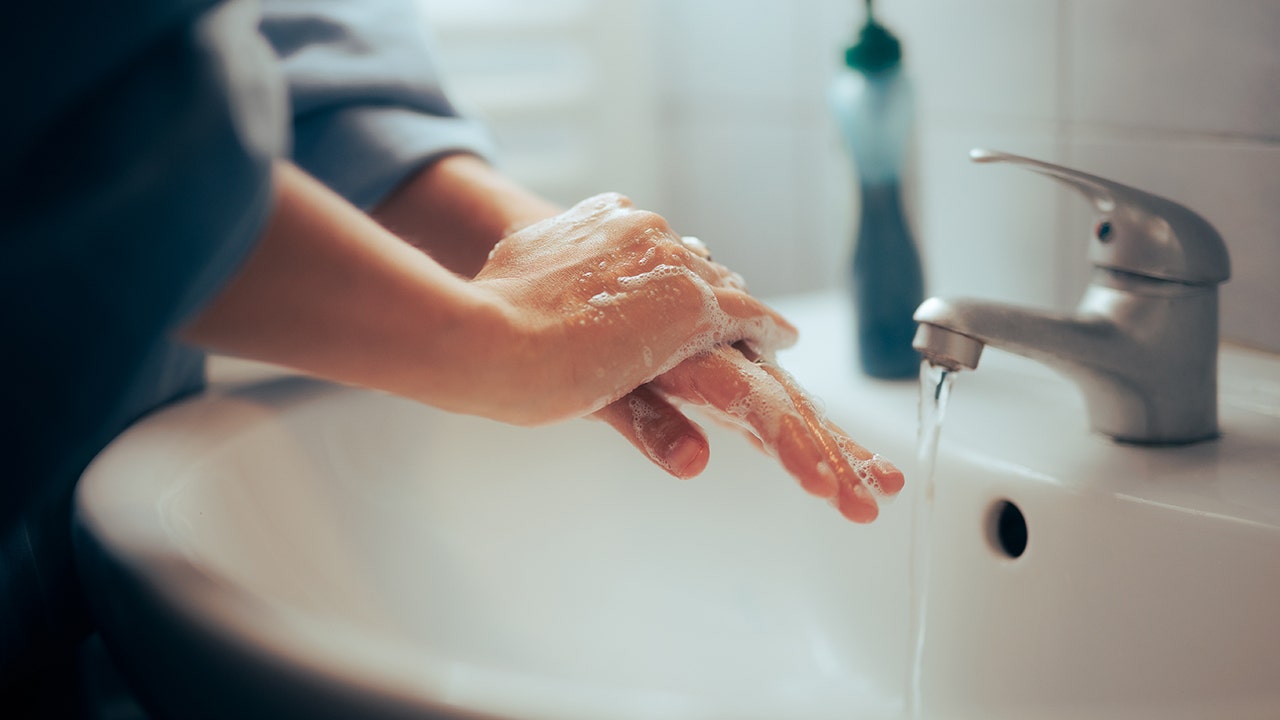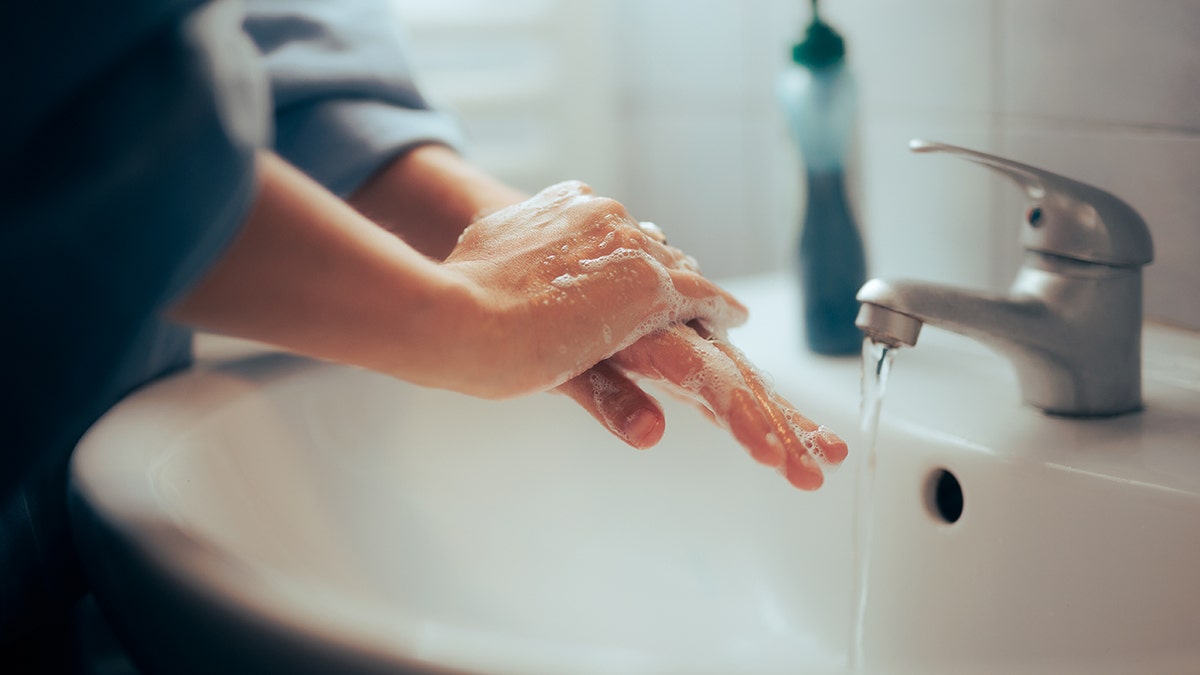Health
‘Remarkable’ gene-editing treatment for sickle cell disease is approved by FDA

Modern medicine is one step closer to potentially curing sickle cell disease.
On the heels of the U.K.’s authorizing the world’s first gene-edited treatment for sickle cell disease on Nov. 16, the U.S. Food and Drug Administration (FDA) approved the same treatment on Dec. 8.
“CASGEVY’s approval by the FDA is momentous,” Reshma Kewalramani, M.D., chief executive officer and president of Vertex Pharmaceuticals in Boston, said in a statement provided to Fox News Digital.
ALZHEIMER’S BLOOD TEST COULD HIT THE MARKET IN EARLY 2024, RESEARCHERS SAY
“It is the first CRISPR-based gene-editing therapy to be approved in the U.S.”
“These approvals represent an important medical advance with the use of innovative cell-based gene therapies to target potentially devastating diseases and improve public health,” said Peter Marks, M.D., Ph.D., director of the FDA’s Center for Biologics Evaluation and Research, in the agency’s press release.
The U.S. Food and Drug Administration has approved the world’s first gene-edited treatment for sickle cell disease. (iStock)
“Today’s actions follow rigorous evaluations of the scientific and clinical data needed to support approval,” he also said “reflecting the FDA’s commitment to facilitating [the] development of safe and effective treatments for conditions with severe impacts on human health.”
ANTI-AGING DRUG FOR DOGS FROM SAN FRANCISCO FIRM MOVES CLOSER TO GAINING FDA APPROVAL
The CASEVY treatment — also known as exa-cel, or exagamglogene autotemcel — uses technology that “edits” the genes that cause sickle cell disease.
To develop the drug, Boston-based Vertex and CRISPR Therapeutics, which is based in Switzerland, used a gene-editing system known as CRISPR-Cas9 to turn genes on and off, according to the Sickle Cell Disease Association of America website.

The CASEVY treatment — also known as exa-cel, or exagamglogene autotemcel — uses technology that “edits” the genes that cause sickle cell disease. (iStock)
“CASGEVY is a first-in-class treatment that offers the potential of a one-time transformative therapy for eligible patients with sickle cell disease,” said Kewalramani.
The inventors of the CRISPR technology won the Nobel Prize in 2020.
BLOOD CANCER AWARENESS: COMMON TYPES, SIGNS AND TREATMENT OPTIONS
CRISPR stands for “clustered regularly interspaced short palindromic repeats,” which are repetitive sequences of DNA.
“The CRISPR technology [that is] being used with this treatment for sickle cell disease — a devastating inherited illness that profoundly affects survival and quality of life — is remarkable,” Dr. Mikkael Sekeres, chief of the division of hematology of Sylvester Cancer Center at the University of Miami, told Fox News Digital.

The treatment is approved for people 12 and older with severe sickle cell disease who get recurrent pain syndromes known as vaso-occlusive crises, in which blood flow is blocked due to sickle cells. (iStock)
He was not involved in the drug’s development.
“The data from the admittedly small study in support of the treatment’s approval by the FDA are impressive, and the therapy was thought safe by a panel of independent experts,” Sekeres added.
“CASGEVY is a first-in-class treatment that offers the potential of a one-time transformative therapy for eligible patients with sickle cell disease.”
The treatment is approved for people 12 and older with severe sickle cell disease who get recurrent pain syndromes known as vaso-occlusive crises, in which blood flow is blocked due to sickle cells.
The FDA also approved Lyfgenia, the first cell-based gene therapy for the treatment of sickle cell disease in people 12 years of age and older, per the agency’s press release.
What to know about sickle cell disease
Sickle cell disease is the most common inherited blood disorder in the United States, affecting an estimated 100,000 Americans, as the National Institutes of Health (NIH) noted on its website.
It disproportionately affects people of Black or African ancestry.

The difference in blood flow is shown between sickle cell disease and normal, healthy blood vessels. (iStock)
Red blood cells, which are produced in the bone marrow, contain a protein called hemoglobin that helps carry oxygen throughout the body.
The cells are normally a round shape, which allows them to easily travel through small blood vessels, according to the Centers for Disease Control and Prevention (CDC) website.
Patients with sickle cell disease inherit a gene mutation that produces abnormal hemoglobin, which makes it more difficult for the cells to move through the bloodstream, per the NIH.
SUICIDE AND GENETICS: STUDY IDENTIFIES 12 DNA VARIATIONS THAT COULD INCREASE THE RISK
The diseased cells eventually get stuck in blood vessels, which blocks blood flow — sometimes leading to painful episodes (known as sickle cell crises), infection, acute chest syndrome or stroke, per the CDC.
The cells begin to take on the shape of the C-shaped farm tool known as a sickle, which led to the disease’s name.
How the therapy works
While in utero, fetuses make a type of hemoglobin called fetal hemoglobin, which does not cause cells to sickle and has been shown to make sickle cell disease milder in those who have it.
After a baby is born, the BCL11A gene instructs the red blood cells to stop producing fetal hemoglobin. The gene is usually turned off within six months of birth, a Vertex spokesperson told Fox News Digital.

Patients with sickle cell disease inherit a gene mutation that produces abnormal hemoglobin, which makes it more difficult for the cells to move through the bloodstream. (iStock)
CASEVY works by targeting — and “turning off” — the BCL11A gene.
This enables continued production of fetal hemoglobin and significantly reduces the damage from sickle cells, according to Vertex.
Although the treatment may not “cure” sickle cell disease, as patients will still have the sickle cell mutation, it could potentially eliminate most of the signs and symptoms, even if a small subset of the patient’s red blood cells continue to sickle, the Vertex spokesperson told Fox News Digital.
KIDS’ SLEEP PROBLEMS COULD BE INHERITED, NEW RESEARCH SUGGESTS
To receive the treatment, patients will undergo a bone marrow transplant.
First, the patient will receive medication to help stem cells move from the bone marrow into the bloodstream. Next, the blood will be collected and the stem cells isolated.
The cells then will be shipped to a laboratory, where genetic technology will be used to edit their DNA.

Sickle cell disease is the most common inherited blood disorder in the United States, affecting an estimated 100,000 Americans. (iStock)
The patient will then receive chemotherapy to destroy all potential stem cells, ideally, that could produce sickle cells in the future.
The edited cells then will be infused back into the patient under the monitoring of health care professionals, who will ensure that healthy cells are produced in the bone marrow.
CLICK HERE TO SIGN UP FOR OUR HEALTH NEWSLETTER
The FDA recommends that patients be monitored for health issues for 15 years after treatment.
Potential limitations and cautions
More research is needed to determine the treatment’s long-term effectiveness, experts say.
It’s unclear whether the treated stem cells will continue to produce red blood cells that don’t sickle for the rest of the patient’s life, or if the cells will die off after a certain number of years, the Sickle Cell Disease Association of America cautioned on its website.

The diseased cells begin to take on the shape of the C-shaped farm tool known as a sickle — which led to the disease’s name. (iStock)
As the patients also receive chemotherapy, potential adverse effects could include infertility, secondary cancer or infectious complications.
The cost of the therapy and eligibility restrictions may also limit who can receive it.
The treatment could cost millions of dollars per patient, according to recent reports.
“The million-dollar question is how people with the disease will be able to afford this life-altering treatment, and how the health care system can sustain such costs,” Sekeres told Fox News Digital.
For more Health articles, visit www.foxnews.com/health.

Health
4 biggest handwashing mistakes that could increase germs and viruses

Proper handwashing could save a million lives a year, according to an expert — and yet many people are doing it improperly, often due to misconceptions surrounding the practice.
Doctors recommend washing with soap and water for at least 20 seconds to reduce the spread of infectious diseases.
The NFID 2025 State of Handwashing Report, recently released by the National Foundation for Infectious Diseases, provides details on Americans’ handwashing habits (and mistakes).
WHY YOUR LAUNDRY COULD BE MAKING YOU SICK AND WHAT TO DO ABOUT IT
The report is based on a survey of 3,587 U.S. adults, conducted in November and December 2024 and March 2025.
Robert Hopkins Jr., MD, medical director of NFID in Maryland, spoke to Fox News Digital about what Americans are doing wrong when it comes to handwashing.
1. Only using hand sanitizer
“We have to recognize that there are a number of important infections that hand sanitizers are not effective at preventing,” Hopkins said.
Proper handwashing could save a million lives a year, according to experts. (iStock)
One example is norovirus, a highly contagious stomach virus that is common on cruise ships and is also spread seasonally.
The virus cannot be killed with hand sanitizer, but is “easily destroyed” with soap and water, according to Hopkins.
A COMMON KILLER BUG IS ENDANGERING AMERICANS: ‘PANDEMIC IN PLAIN SIGHT’
Certain viruses are “encapsulated” and can be destroyed with either soap and water or hand sanitizer, the expert said. However, there is also an “unencapsulated” type of virus, which has an outer coat that does not break down from the alcohol in hand sanitizer.
Using soap and water is a more effective way to kill the germs, the doctor noted.
2. Just coughing into your sleeve
When people cough or sneeze into their sleeve, they could still spread germs afterward.
“If you cough into your sleeve … go ahead and wash your hands with soap and water as well,” Hopkins advised.
COMMON MEDICAL TEST LINKED TO 5% OF CANCERS, STUDY SUGGESTS: ‘USE THEM WISELY’
“We also have to recognize that we often bring our hands up close to our face, touch our nose, our glasses, other parts of our face,” noted the doctor, who is based in Arkansas.
“If we have bacteria or viruses on our hands, we can introduce them into our mucous membranes, where we can get infections.”

Nearly half of survey respondents admitted to forgetting or choosing not to wash their hands at key times. (iStock)
3. Washing hands more in certain seasons
The NFID report stated that one in four respondents washed their hands more frequently in the fall and winter, when cold and flu are prevalent.
“The seasonal variance is understandable given that some respiratory diseases, including flu and respiratory syncytial virus (RSV), tend to peak during fall and winter,” the report stated.
CLICK HERE TO SIGN UP FOR OUR HEALTH NEWSLETTER
“However, other germs — like those that cause colds, norovirus and other infectious diseases — can spread throughout the year. It is important to maintain proper hand hygiene all year round to help stay healthy.”
4. Not washing hands at critical times
Most adults wash their hands after using the bathroom (69%), handling food (48%) and handling human or animal waste (39%), according to NFID’s report.
“We need to reinforce the importance of this simple tool.”
Only 30% of respondents, however, reported that they are likely to wash their hands after sneezing or coughing.
Nearly half of survey respondents admitted to forgetting or choosing not to wash their hands at key times, like after visiting a grocery store, restaurant, doctor’s office, pharmacy, clinic or hospital.

“I think most of the public health campaigns around hand hygiene have been focused on healthcare settings,” a doctor said. (iStock)
“We need to reinforce the importance of this simple tool,” Hopkins said of handwashing.
“I think most of the public health campaigns around hand hygiene have been focused on healthcare settings,” he added.
Regarding handwashing as a practice in general, Hopkins emphasized, “We need to bring this back into the fold.”
For more Health articles, visit www.foxnews.com/health
“If everybody washed their hands more consistently, we could probably save somewhere in the neighborhood of a million lives a year.”
Health
Prayer Walks Boost Weight Loss + Inner Peace: One Woman Lost 359 Lbs!

Use left and right arrow keys to navigate between menu items.
Use escape to exit the menu.
Sign Up
Create a free account to access exclusive content, play games, solve puzzles, test your pop-culture knowledge and receive special offers.
Already have an account? Login
Health
Most sleep-deprived cities in US revealed in report: Where does yours rank?

Where you live could affect how you sleep at night.
New research from Innerbody revealed that some areas of the country are more sleep-deprived than others.
The study used data from the Centers for Disease Control and Prevention (CDC) and other benchmarks from the 100 most populous cities in the U.S., ranking each on sleep duration and quality.
HERE’S WHY 90% OF AMERICANS DON’T SLEEP THROUGH THE NIGHT, ACCORDING TO EXPERT
For each city, the researchers analyzed the prevalence of five metrics — physical activity, obesity, alcohol consumption, mental distress, and noise and light pollution — all of which can impact sleep quality.
Researchers analyzed how physical activity, obesity, alcohol consumption, mental distress, and noise and light pollution impact sleep across the country. (iStock)
Below are the top 10 most sleep-deprived cities, according to the study results.
- Norfolk, Virginia
- New Orleans, Louisiana
- Detroit, Michigan
- Toledo, Ohio
- Cincinnati, Ohio
- Indianapolis, Indiana
- Philadelphia, Pennsylvania
- Laredo, Texas
- Cleveland, Ohio
- Memphis, Tennessee
The researchers noted that many of these cities are in the eastern half of the U.S., and Ohio appears multiple times.
HEAT EXPOSURE LINKED TO BETTER SLEEP, EXPERTS SAY — HERE’S WHY
While these cities ranked as the most overall sleep-deprived, Honolulu, Hawaii, placed No. 1 for worst sleep duration, with 42.3% of adults getting fewer than seven hours of shuteye per night.
That’s followed by Norfolk, Virginia; New Orleans, Louisiana; Detroit, Michigan; and Huntsville, Alabama.

Norfolk, Virginia, is the No. 1 most sleep-deprived city, research shows. (iStock)
Memphis, Tennessee, ranked No. 1 for the city with the worst sleep quality, followed by New Orleans, Louisiana; Norfolk, Virginia; Cincinnati, Ohio; and Corpus Christi, Texas.
JUST ONE NIGHT OF POOR SLEEP COULD HAVE THESE SURPRISING HEALTH EFFECTS
The study also identified the country’s least sleep-deprived cities, listed below.
- Minneapolis, Minnesota
- Seattle, Washington
- San Jose, California
- Madison, Wisconsin
- Boise, Idaho
- St. Paul, Minnesota
- Denver, Colorado
- Lincoln, Nebraska
- Oakland, California
- San Francisco, California
The researchers commented that cooler temperatures in some of these locations could boost sleep quality.

Newark, New Jersey, suffers the most in sleep quality due to light and sound pollution, the study found. (iStock)
Sleep expert Wendy Troxel, PhD – a RAND Corporation senior behavioral specialist and licensed clinical psychologist in Utah – confirmed in an interview with Fox News Digital that, per her own research, location can have an impact on sleep.
CLICK HERE TO SIGN UP FOR OUR HEALTH NEWSLETTER
“It’s often said that your zip code can influence your health as much as your genetic code,” she said. “Together, these results highlight that this saying holds true for sleep health as well.”
“It’s often said that your zip code can influence your health as much as your genetic code.”
Troxel’s latest research, published in the journal Sleep Health, showed that improving sleep health requires “moving beyond individual-focused approaches and considering broader strategies” in relation to neighborhoods, she said.
This includes investing in neighborhood improvements to enhance sleep quality and overall population health.
For more Health articles, visit foxnews.com/health
“Considering the strong connection between sleep health issues and preventable chronic diseases like cardiovascular disease, diabetes and stroke, our findings suggest that interventions aimed at improving neighborhood conditions could yield significant benefits,” she added.
-

 Technology1 week ago
Technology1 week agoMexico is suing Google over how it’s labeling the Gulf of Mexico
-

 Education1 week ago
Education1 week agoA Professor’s Final Gift to Her Students: Her Life Savings
-

 Education1 week ago
Education1 week agoVideo: Tufts Student Speaks Publicly After Release From Immigration Detention
-

 Politics1 week ago
Politics1 week agoPresident Trump takes on 'Big Pharma' by signing executive order to lower drug prices
-

 Culture1 week ago
Culture1 week agoTest Yourself on Memorable Lines From Popular Novels
-

 News1 week ago
News1 week agoAs Harvard Battles Trump, Its President Will Take a 25% Pay Cut
-

 News1 week ago
News1 week agoWhy Trump Suddenly Declared Victory Over the Houthi Militia
-

 Culture1 week ago
Culture1 week agoBook Review: ‘Original Sin,’ by Jake Tapper and Alex Thompson













